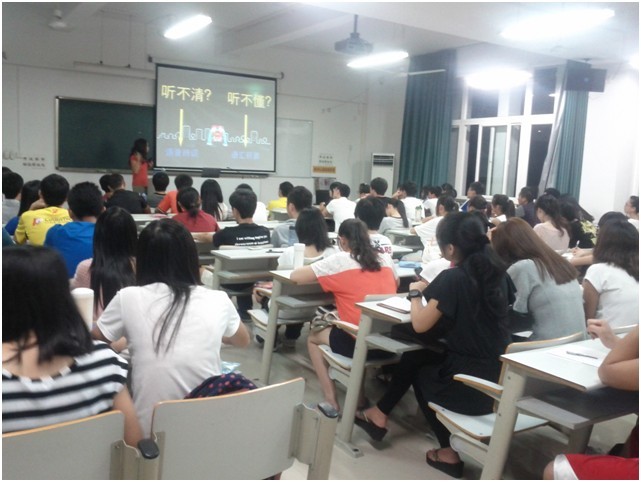 返回
教育头条
返回
教育头条

英语四级阅读真题解析分享 英语四六级
小编跟大家一起了解2019年6月英语四级阅读真题解析预祝大家高分通过大学英语四级考试!
2019年6月大汇总 题型
Passage One In the classic marriage vow, couples promise to stay together in sickness and in health. But a new study finds that the risk of divorce among older married couples rises when the wife—but not the husband—becomes seriously ill. “Married women diagnosed with a serious health condition may find themselves struggling with the impact of their disease while also experiencing the stress of divorce,”
said Amelia Karraker. Karraker and co-author Kenzie Latham of Indiana University-Purdue University Indianapolis analyzed 20 years of data on 2,717 marriages from the Health and Retirement Study,
conducted by the Institute for Social Research since 1992. At the time of the first interview, at least one of the partners was over the age of 50. The researchers examined how the onset of four serious physical illnesses—cancer, heart problems, lung disease and stroke—affected marriages. They found that, overall, 31 percent of marriages ended in divorce over the period studied. The incidence of new chronic illness onset increased over time as well, with more husbands than wives developing serious health problems.
“We found that women are doubly vulnerable to marital dissolution in the face of illness,” Karraker said. “They are more likely to be widowed, and if they are the ones who become ill, they are more likely to get divorced.” While the study did not assess why divorce is more likely when wives but not husbands become seriously ill, Karraker offers a few possible reasons.“Gender norms and social expectations about caregiving may make it more difficult for men to provide care to ill spouses,”
Karraker said. “And because of the imbalance in marriage markets, especially in older ages, divorced men have more choices among prospective partners than divorced women. Given the increasing concern about health care costs for the aging population, Karraker believes policymakers should be aware of the relationship between disease and risk of divorce. “Offering support services to spousal caregivers may reduce marital strain and prevent divorce at older ages,”

she said. “But it’s also important to recognize that the impetus for divorce may be health-related and that sick ex-wives may need additional care and services to prevent worsening health and increased health costs.” .What can we learn about marriage vows from the passage? A) They may not guarantee a lasting marriage. B) They are as binding as they used to be. C) They are not taken seriously any more. D) They may help couples tide over hard times. . What did Karraker and co-author Kenzie Latham find about elderly husbands? A) They are generally not good at taking care of themselves. B) They can become increasingly vulnerable to serious illnesses. C) They can develop different kinds of illnesses just like their wives.
D) They are more likely to contract serious illnesses than their wives. 48. What does Karraker say about women who fall ill? A) They are more likely to be widowed. B) They are more likely to get divorced. C) They are less likely to receive good care D) They are less likely to bother their spouses. 49.Why is it more difficult for men to take care of their sick spouses according to Karraker? A) They are more accustomed to receiving care. B)They find it more important to make money for the family. C) They think it more urgent to fulfill their social obligations D) They expect society to do more of the job. 50. What does Karraker think is also important? A) Reducing marital stress on wives. B) Stabilizing old couples' relations. C) Providing extra care for divorced women.
2019年6月大汇总 题型
Passage One In the classic marriage vow, couples promise to stay together in sickness and in health. But a new study finds that the risk of divorce among older married couples rises when the wife—but not the husband—becomes seriously ill. “Married women diagnosed with a serious health condition may find themselves struggling with the impact of their disease while also experiencing the stress of divorce,”
said Amelia Karraker. Karraker and co-author Kenzie Latham of Indiana University-Purdue University Indianapolis analyzed 20 years of data on 2,717 marriages from the Health and Retirement Study,
conducted by the Institute for Social Research since 1992. At the time of the first interview, at least one of the partners was over the age of 50. The researchers examined how the onset of four serious physical illnesses—cancer, heart problems, lung disease and stroke—affected marriages. They found that, overall, 31 percent of marriages ended in divorce over the period studied. The incidence of new chronic illness onset increased over time as well, with more husbands than wives developing serious health problems.
“We found that women are doubly vulnerable to marital dissolution in the face of illness,” Karraker said. “They are more likely to be widowed, and if they are the ones who become ill, they are more likely to get divorced.” While the study did not assess why divorce is more likely when wives but not husbands become seriously ill, Karraker offers a few possible reasons.“Gender norms and social expectations about caregiving may make it more difficult for men to provide care to ill spouses,”
Karraker said. “And because of the imbalance in marriage markets, especially in older ages, divorced men have more choices among prospective partners than divorced women. Given the increasing concern about health care costs for the aging population, Karraker believes policymakers should be aware of the relationship between disease and risk of divorce. “Offering support services to spousal caregivers may reduce marital strain and prevent divorce at older ages,”

she said. “But it’s also important to recognize that the impetus for divorce may be health-related and that sick ex-wives may need additional care and services to prevent worsening health and increased health costs.” .What can we learn about marriage vows from the passage? A) They may not guarantee a lasting marriage. B) They are as binding as they used to be. C) They are not taken seriously any more. D) They may help couples tide over hard times. . What did Karraker and co-author Kenzie Latham find about elderly husbands? A) They are generally not good at taking care of themselves. B) They can become increasingly vulnerable to serious illnesses. C) They can develop different kinds of illnesses just like their wives.
D) They are more likely to contract serious illnesses than their wives. 48. What does Karraker say about women who fall ill? A) They are more likely to be widowed. B) They are more likely to get divorced. C) They are less likely to receive good care D) They are less likely to bother their spouses. 49.Why is it more difficult for men to take care of their sick spouses according to Karraker? A) They are more accustomed to receiving care. B)They find it more important to make money for the family. C) They think it more urgent to fulfill their social obligations D) They expect society to do more of the job. 50. What does Karraker think is also important? A) Reducing marital stress on wives. B) Stabilizing old couples' relations. C) Providing extra care for divorced women.
上述就是教育宝头条介绍的英语四级阅读真题解析分享 英语四六级完整信息,想要查看更多的四级六级考试资讯,敬请关注我的微信18560125702,还可免费获取学习攻略哦!返回教育宝头条
【免责声明】本文仅代表作者本人观点,与教育宝无关。教育宝对文中陈述、观点判断保持中立,不对所包含内容的准确性、可靠性或完整性提供任何保证。请读者仅作参考,特此声明!





